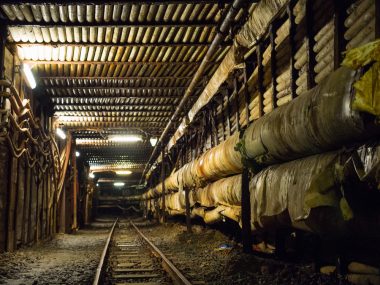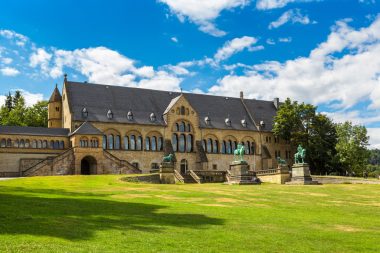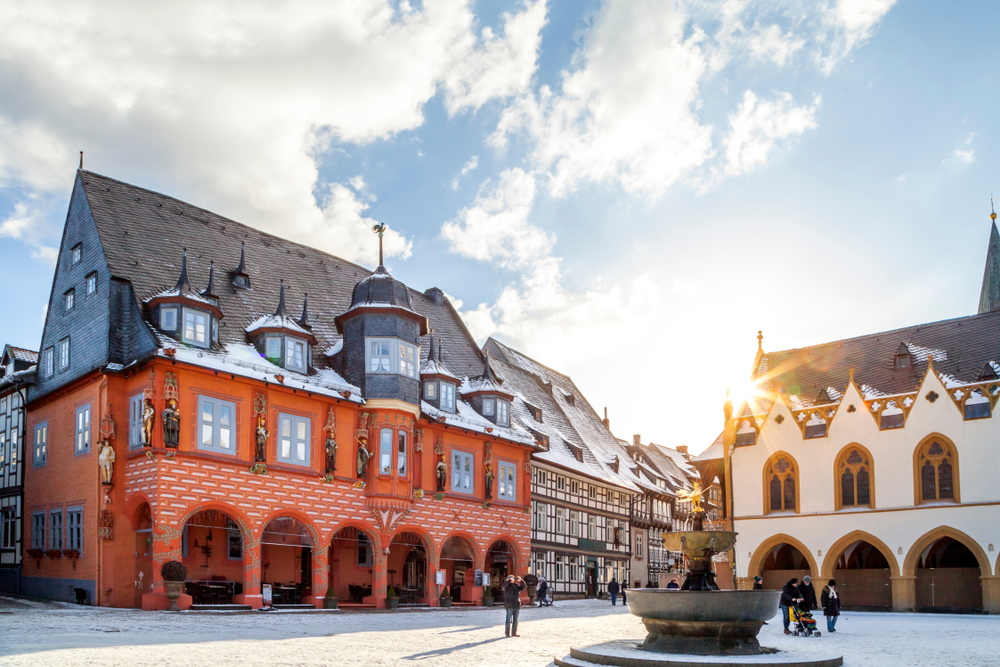Goslar, the small town in Lower Saxony on the edge of the North Harz Mountains, is one of the most famous places in the Harz region and is known and very popular as a destination not only for day trips, weekend trips, but also for long-term vacationers. The city with its 18 districts has about 50,000 inhabitants.
To the northwest, the town borders on the foothills of the Harz Mountains with the Rammelsberg (mine), and to the extreme south on the Salzgitter mountain range. In the west it is the Steinberg, and in the east runs the border with Saxony-Anhalt. To the northeast, the Harly Mountain borders the city of Goslar.
The name “mountain” is flattering, because the height is only about 256 meters, but this hill is overgrown with a fabulous mixed forest that is worth seeing. The numerous, well-stocked trees are home to birdlife. Ideal for hikes between 1 and 4 hours.
History of Goslar
King Henry I merged several villages around the year 920, which was already important as a settlement over 1000 years ago. The basis for the prosperity of the city in 968 was the nearby, productive Rammelsberg silver mine in the northwest of the foothills of the Harz Mountains.
Numerous imperial diets of the early German kings were held in Goslar, which made the city widely known. In this context, many churches, chapels and monasteries were built.
Museums in Goslar

In this phase of the High Middle Ages, a total of 47 churches, chapels and monasteries were built. Some of these buildings are still present today and can be visited.
- Rammelsberg Museum and Visitor Mine (UNESCO World Heritage Site)
- Pewter Figurine Museum
- Handicrafts in the Grand Holy Cross
- Zwinger Goslar: Museum of the Late Middle Ages
- Goslar Museum
- Mönchehaus Museum
- Gallery Stoetzel-Tiedt
Churches in Goslar
- Stave church
- Market Church of St. Cosmas and Damian
- Neuwerkkirche Goslar
- St. James’ Church
- Goslar Cathedral (Dömchen)
- St. James the Elder
Buildings

The historic old town of Goslar is almost completely preserved, characterized by numerous half-timbered buildings, which are also part of the World Heritage Site. You will find countless buildings shrouded in the breath of history, such as:
- The Wide Gate
- Kennel
- Imperial palace
- Cathedral Vestibule
- Market Church of St. Cosmas and Damian
After Goslar had been elevated to a free imperial city and a member of the Hanseatic League in the late Middle Ages, it became necessary to protect the city with fortress-like defensive fortifications. Impressive remnants of it have defied the ravages of centuries to this day and can still be admired.
Sights of the city of Goslar
The historic market square of Goslar is surrounded by numerous shops that invite you to stroll and shop. Pretty cafés and restaurants entice you to linger. The carillon accompanied by figures is not to be missed.
You should not leave Goslar without visiting the Rammelsberg Mining Museum. On the site of the former ore mine, museum, monument and former workplace mix in an impressive and unique way. A total of three museum buildings present an interplay between authentic place and historical past.
The mine’s power station, built in 1906, is the oldest building on the site. Its turbines, control centres and all the technical equipment give an idea of the enormous energy requirements that were necessary for the operation of the mine. Today, a museum of modern art is installed there in an extraordinary setting.
Forest Adventure Trail
If you have had enough of all the buildings and sights, you can go in search of the forest adventure trail. Finding it is a small adventure in itself, because the signs are overgrown. Actually, it is more of a teaching area than a path. It goes uphill and downhill, you could get lost smooth. But also suitable for children and entertaining. Seeing, touching, smelling, tasting, discovering nature.
To the south is the Nonnenberg spring. It refreshes with delicious drinking water.
Attractions in the area
The Radau Waterfall is the most suitable starting point par excellence for beautiful excursions, whether on foot or by bike. It blends harmoniously into the picture with the inn, which invites you to a first refreshment. As a starting point to the Ecker reservoir, you can take worthwhile photos here.
You have an overwhelming view of the Brocken from the Rabenklippe. The forest inn is suitable for a short rest.
From easy to moderately difficult hiking trails to difficult routes for which you need appropriate equipment and alpine experience, there are hiking tours for every requirement.
In the middle of the forest you come across the stave church. A Scandinavian-style building with impressive architecture and an interior made entirely of wood. Must visit.
These sights, sorted by popularity, are waiting to be explored
- Piece
- Hexentanzplatz
- Barbarossa Cave
- Rammelsberg Visitor Mine
- Kyffhäuser Monument
- Devil’s Wall
- Harz National Park
- Harz Narrow Gauge Railway
- Iberg stalactite cave
- Falkenstein Castle
Terms such as Hexentanzplatz, Teufelsmauer, in Goslar itself the secret landmark of the city, the Butterhanne, suggest numerous mystical, difficult to explain, dark powers.
In the production of butter, for example, the devil himself probably had a hand in it. Only the “Butterhanne” resisted this and thus became a folk heroine. The established restaurant Brusttuch near the market church offers the “Butterhanne” her well-deserved place, where she shows her buttocks to the devil on the neighboring Knagge.
Goslar is a very beautiful, well-kept, historic gem. Joining a city tour is definitely worthwhile.


